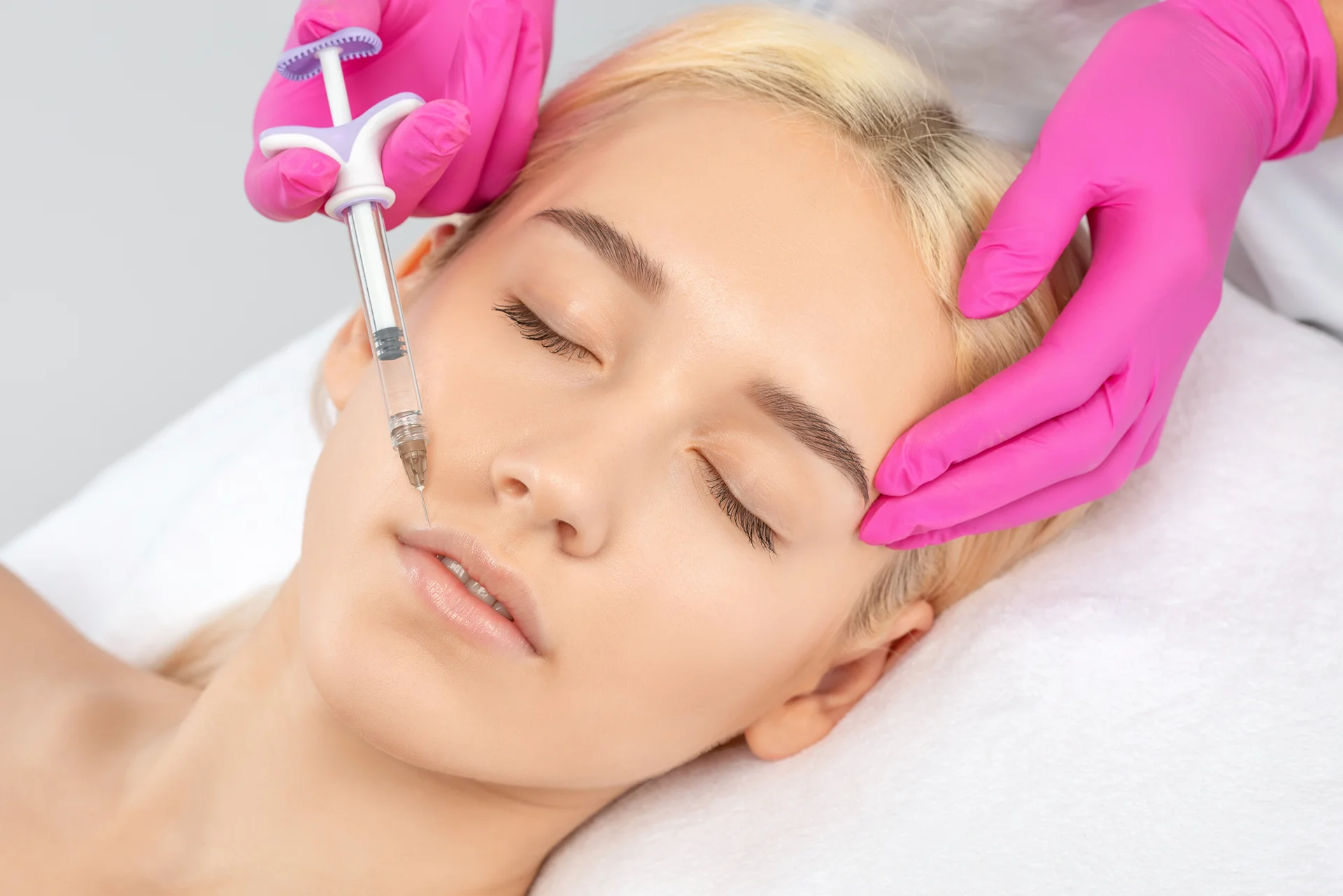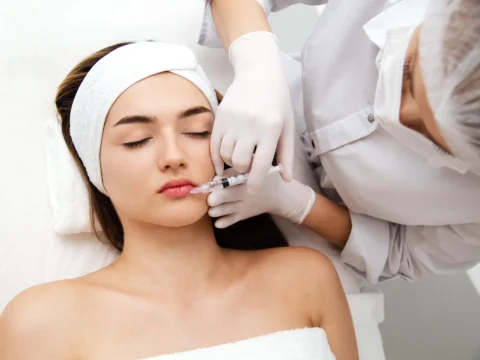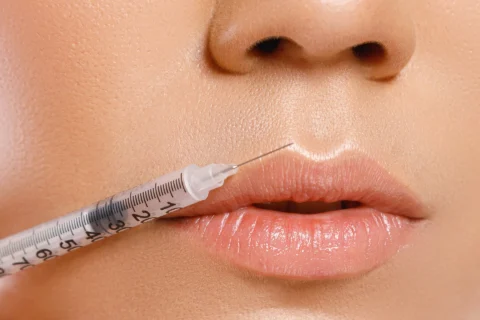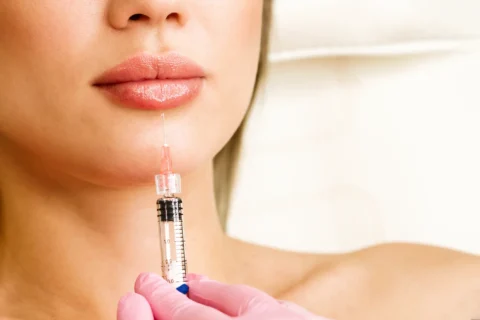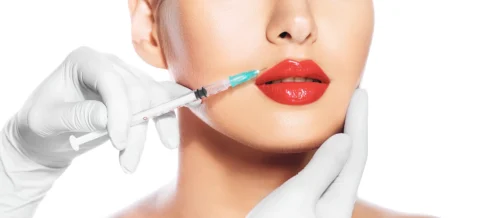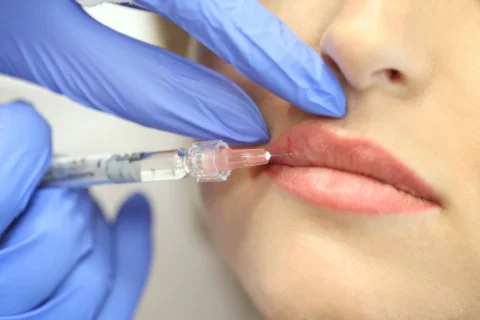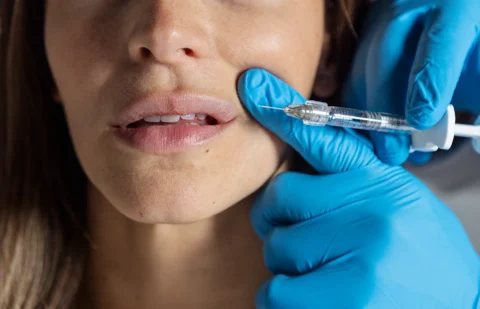Lip fillers have become a popular choice for those looking to add volume and shape to their lips. However, as with any cosmetic procedure, there are risks involved.
Dr. Hardik Soni of Ethos Aesthetics &Wellness highlights the importance of being informed about the potential side effects and the critical nature of choosing a qualified professional for the procedure.
Understanding the Risks and Safety of Lip Fillers
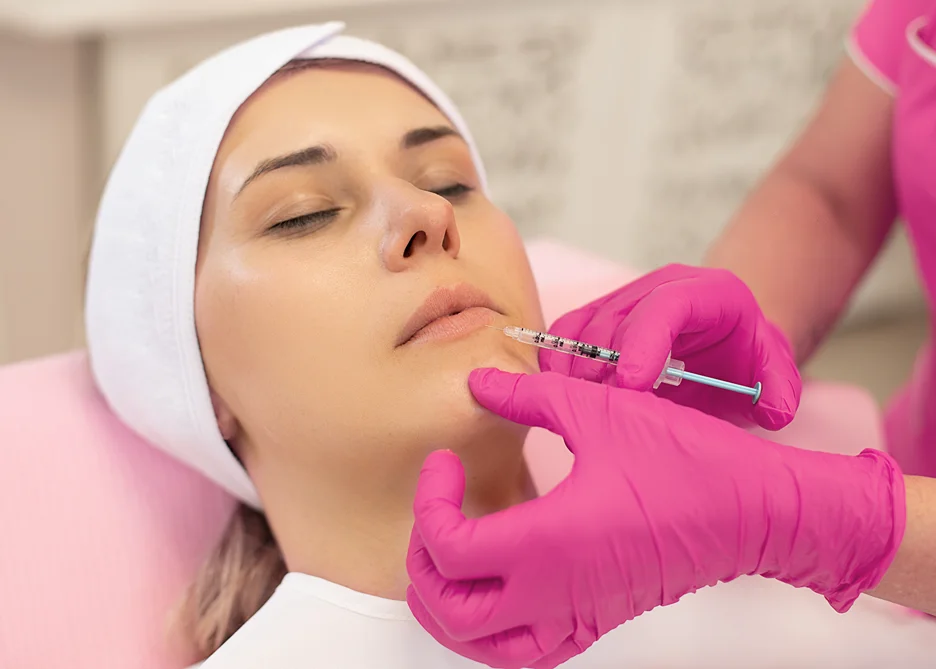
Many people choose to undergo cosmetic treatments to change aspects of their appearance. One option is to get lip fillers. Those considering lip fillers should approach the procedure as an informed patient.
While lip filler injections are generally low-risk, individuals must educate themselves about the procedure to ensure their safety and that the results meet their expectations.
What Are the Common Side Effects of Lip Filler Injections?
Typical side effects of lip filler injections include:
- Swelling, bruising, redness, and tenderness around the injection site
- Asymmetries or uneven results if the filler is not distributed properly
- Lumps, nodules, or hard spots under the skin if too much filler is injected in one area
- Allergic reactions to ingredients in the dermal filler product
- Numbness lasting a few days to weeks around the lips
How Safe Are Lip Fillers?
The safety of lip fillers depends largely on the skill and technique of the provider. When administered properly by an experienced, certified medical professional in a regulated clinic, lip fillers are considered relatively low-risk procedures with minimal downtime.
However, unqualified injectors substantially increase the chances of complications. Patients should vet their provider’s qualifications and avoid non-clinical settings lacking proper sterility controls.
Reputable dermatologists recommend FDA-approved fillers from qualified clinics, not unverified discounted products. Alternatives like lip plumping makeup or microneedling provide only mild, temporary effects compared to dermal filler injections.
What Are The Long-Term Effects of Repeated Injections?
While individual lip filler injections provide temporary effects lasting 6-12 months, repeated injections over many years can cause:
- Distorted lip shape due to excessive filler accumulation
- Granulomas and hard lumps under the skin
- Loss of natural lip definition and contour
- Thinning of the lips and loss of pigment over time
Dr. Soni recommends allowing 3-6 months between treatments to prevent overfilling and allow the lips to heal. Periodic discontinuation of injections can help maintain a natural shape over time.
What Should You Know About Health Risks?
Serious health complications from lip fillers are rare with proper sterile technique. However, potential risks include:
- Biofilm infections spreading from the injection site
- Blocked blood vessels leading to embolisms or vision loss if filler enters arteries
- Severe allergic reactions
- Damage and scarring from improperly placed filler affecting lip function
Unregulated or non-FDA approved fillers also introduce the toxicity risks of ingredients like industrial silicone or tire rubber.
What Are the Safest Lip Filler Options?
When considering lip fillers, it’s important to understand the safest options. The most well-tolerated lip fillers use substances similar to those naturally found in the body. Here are some of the safer options:
- Hyaluronic Acid Fillers: Hyaluronic acid exists naturally in skin and connective tissues. As a filler, it increases volume and smooths lines in lips. Brands like Restylane and Juvederm contain hyaluronic acid.
- Calcium Hydroxylapatite: This mineral-like material prompts collagen growth. It can address deeper wrinkles. Radiesse uses calcium hydroxylapatite.
- Poly-L-lactic Acid: A biodegradable polymer used in dissolvable stitches. Sculptra stimulates collagen with this substance.
- Polymethylmethacrylate (PMMA): Tiny PMMA microspheres provide ongoing support under the skin. PMMA is found in Bellafill.
When performed correctly, these safer options can augment lips gradually for subtle, natural-looking results. An experienced provider can help determine the safest filler to meet your goals.
Are There Any Safe Alternatives to Lip Fillers?
People looking for fuller lips have several non-invasive options besides dermal filler injections:
- Makeup Contouring: Skillful application of lip liner, gloss, and lipstick can give your lips a fuller look without any injections.
- Lip Plumping Glosses: These glosses cause a slight, temporary swelling of the lips, leading to a fuller appearance. The effect is subtle and fades quickly.
- Lip Pumps: These devices use suction to draw blood into the lips, temporarily enlarging them for a few hours. This method does not involve any chemicals.
- Microneedling: This technique involves tiny needles that cause small injuries in the lips, encouraging collagen production and natural plumping over time.
- RF Lasers: Radiofrequency energy gently heats the tissues under the skin, promoting collagen production and gradual lip enlargement.
While these methods can increase lip fullness, the results are typically less dramatic and shorter-lived than those from dermal filler injections. For more significant and longer-lasting lip enhancement, fillers are a more effective option when administered by a qualified professional.
Considering Lip Fillers? Do Your Homework First
Being well-informed about the process, options, expected results, and longevity is key to having a positive experience with lip enhancements.
Rather than impulse decisions based on social media trends, individuals exploring lip fillers should:
- Educate themselves on the different types of dermal fillers, their composition, and duration
- Consult with multiple experienced, board-certified providers before choosing where to have the procedure done
- Ask questions about the injector’s technique, experience with lip fillers, and aesthetic style
- Learn about optimal filler placement and amounts to achieve natural-looking, proportional results
- Consider starting slowly with conservative amounts of filler to preview the look
Putting in the homework before injections will help minimize disappointment and risks. While popular, lip fillers should not be taken lightly. Doing your due diligence will help ensure you get the subtle, beautiful outcome you seek.
FAQs About Risks and Side Effects of Lip Fillers
What should I avoid before getting lip fillers?
Avoid blood thinners, fish oil, vitamin E, alcohol, and blood-thinning medications like aspirin before lip fillers to reduce bruising and bleeding risks. Also, avoid dental procedures beforehand.
Why shouldn’t I get lip fillers?
Reasons to avoid lip fillers include having unrealistic expectations, choosing an unqualified injector, failure to research risks, and not following proper aftercare. Proceed cautiously to avoid a “trout pout” or duck-like look.
Why do lip fillers sometimes go wrong?
Lip fillers can go wrong due to poor injection technique, using excessive filler, ignoring uneven anatomy, repeated treatments causing scarring, and improper filler placement. Choosing an unqualified injector greatly increases risks.
Are lip fillers dangerous?
When performed correctly by an experienced, licensed provider, lip fillers are considered relatively safe. However, injections do pose rare risks like infection, allergic reaction, filler migration, and even blindness or stroke if filler enters a blood vessel.
Is lip filler migration dangerous?
Lip filler migration, where the filler material moves from the injection site, can be dangerous if it spreads into the periocular area around the eyes. This rare complication can cause vision issues. Seek emergency care if you experience any sudden changes in vision after lip injections.
Is dissolving lip filler dangerous?
Dissolving hyaluronic acid lip filler is generally safe when performed correctly by an experienced injector. However, other types of permanent or semi-permanent fillers can cause complications if dissolved incorrectly. The dissolving agent can damage tissues or leave irregularities. Consult your provider.
Are lip fillers dangerous when pregnant?
Getting lip fillers while pregnant or breastfeeding is not recommended due to a lack of safety data. Changes in anatomy and circulation during pregnancy may impact results and risks. Lip injections are considered a lower risk in the postpartum period. Discuss your options with an experienced injector.
Conclusion
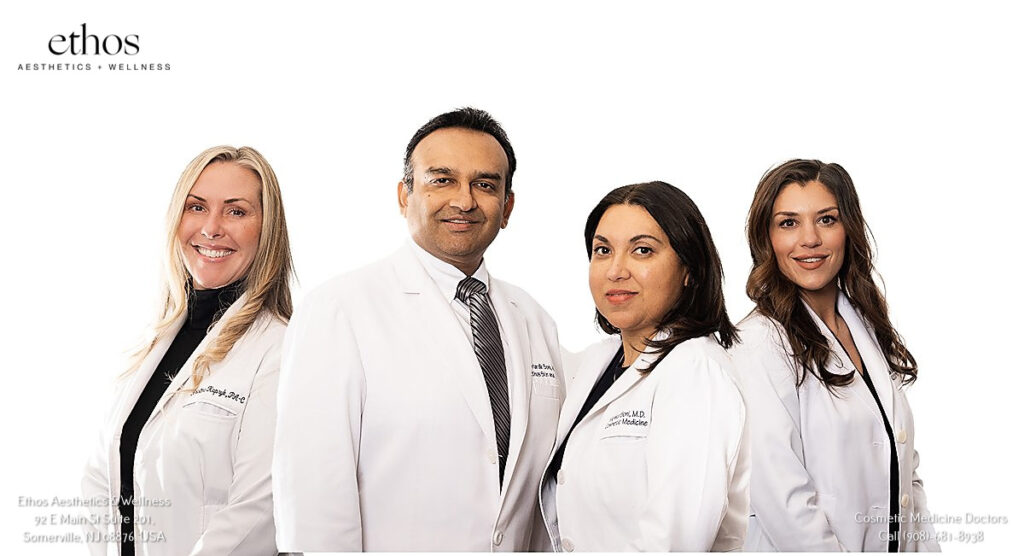
When administered by trusted professionals using sterile methods and FDA-approved substances, lip fillers offer a relatively low-risk option for individuals interested in enhancing their lips cosmetically.
However, patients should educate themselves on potential complications, use conservative amounts of filler, and regularly assess outcomes with their injectors. Avoiding over-injection helps reduce negative effects.
Those interested in learning more about the safety profile of lip filler injections and their effectiveness for achieving natural-looking, long-lasting lip augmentation should contact the experienced providers at Ethos Aesthetics + Wellness for a consultation.

